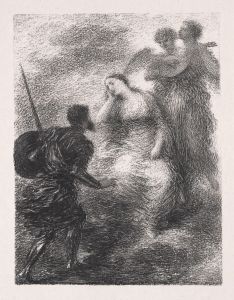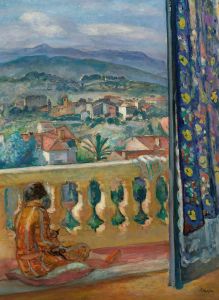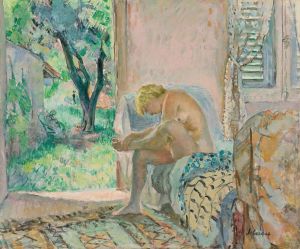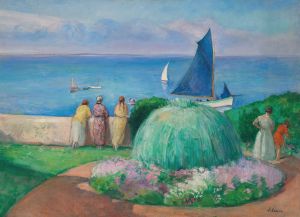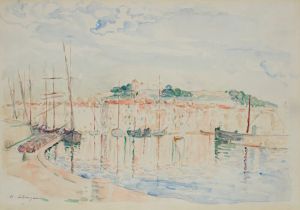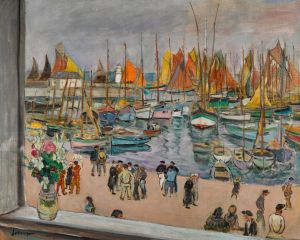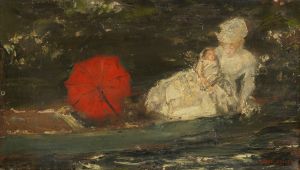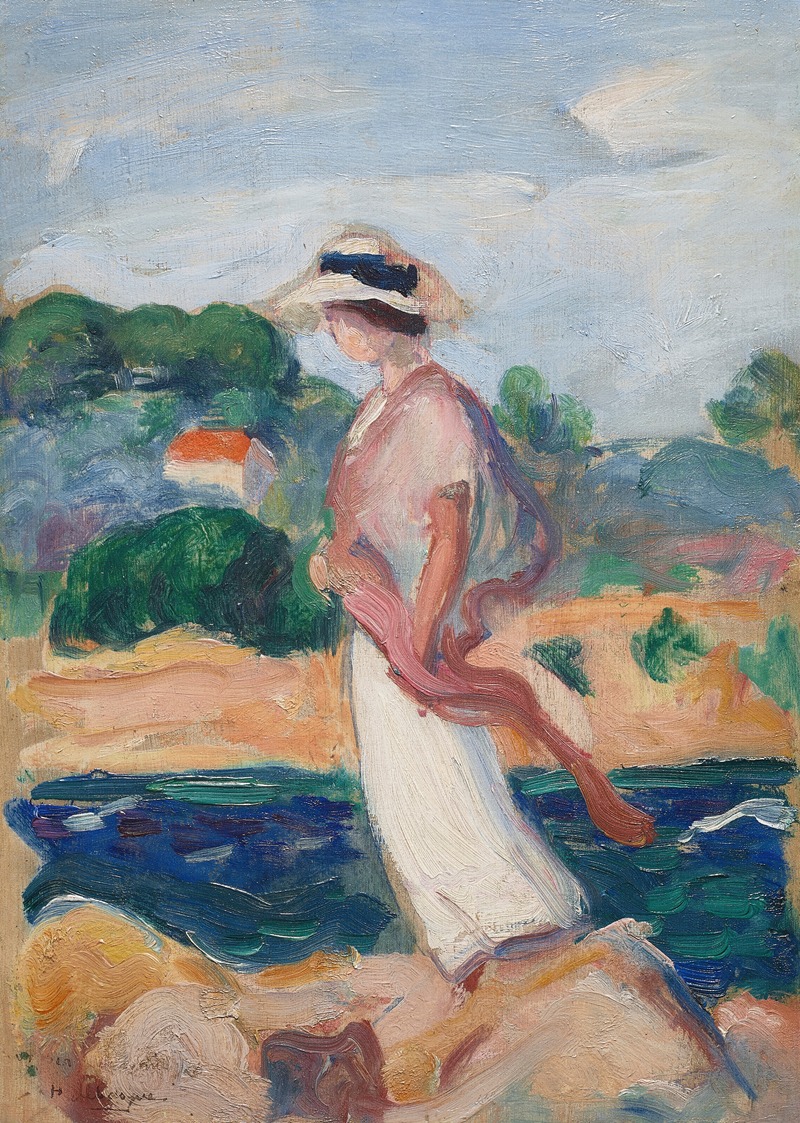
Portrait d’Irène dans un paysage
A hand-painted replica of Henri Lebasque’s masterpiece Portrait d’Irène dans un paysage, meticulously crafted by professional artists to capture the true essence of the original. Each piece is created with museum-quality canvas and rare mineral pigments, carefully painted by experienced artists with delicate brushstrokes and rich, layered colors to perfectly recreate the texture of the original artwork. Unlike machine-printed reproductions, this hand-painted version brings the painting to life, infused with the artist’s emotions and skill in every stroke. Whether for personal collection or home decoration, it instantly elevates the artistic atmosphere of any space.
Henri Lebasque was a French post-impressionist painter known for his use of light and color, often depicting intimate domestic scenes and landscapes. One of his notable works is "Portrait d’Irène dans un paysage," which translates to "Portrait of Irène in a Landscape." This painting exemplifies Lebasque's characteristic style, which combines elements of impressionism with a focus on the emotional and atmospheric qualities of his subjects.
Henri Lebasque was born on September 25, 1865, in Champigné, France. He began his artistic education at the École des Beaux-Arts in Paris and later worked alongside renowned artists such as Camille Pissarro and Auguste Renoir. Lebasque's exposure to these influential figures helped shape his artistic approach, particularly his interest in capturing the effects of light and his use of vibrant color palettes.
"Portrait d’Irène dans un paysage" is a testament to Lebasque's ability to blend portraiture with landscape painting. While specific details about the painting's creation and its subject, Irène, are not extensively documented, it is known that Lebasque often painted his family members and close acquaintances. This personal connection to his subjects allowed him to infuse his works with warmth and intimacy.
The painting likely features a harmonious composition where the figure of Irène is integrated into a lush, natural setting. Lebasque's landscapes are often characterized by their serene and idyllic qualities, reflecting his appreciation for the beauty of the natural world. His use of color is particularly noteworthy, as he employed a palette that was both rich and subtle, capturing the nuances of light and shadow.
Lebasque's work is often associated with the Fauvist movement, although he maintained a more restrained approach compared to some of his contemporaries. His paintings are celebrated for their joyful and tranquil qualities, offering viewers a sense of peace and contentment. "Portrait d’Irène dans un paysage" is likely no exception, embodying these themes through its depiction of a serene outdoor scene.
Throughout his career, Lebasque exhibited his works in various salons and galleries, gaining recognition for his unique style and contribution to modern art. His paintings were well-received for their ability to convey emotion and atmosphere, qualities that are evident in "Portrait d’Irène dans un paysage."
Henri Lebasque passed away on August 7, 1937, in Le Cannet, France. His legacy endures through his extensive body of work, which continues to be appreciated for its beauty and emotional depth. "Portrait d’Irène dans un paysage" remains a significant example of his artistic vision, showcasing his skill in blending portraiture with the natural world.
In summary, "Portrait d’Irène dans un paysage" by Henri Lebasque is a notable work that reflects the artist's mastery of light, color, and composition. While specific details about the painting and its subject may be limited, the piece exemplifies Lebasque's ability to create harmonious and emotionally resonant artworks. His contributions to the post-impressionist movement and his unique artistic voice continue to be celebrated in the art world.





